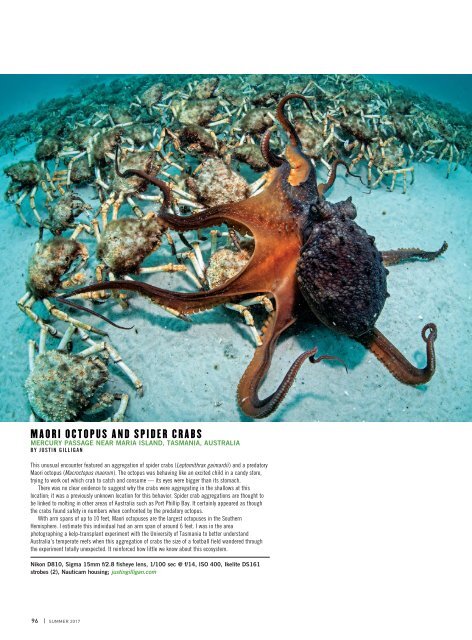AD 2017 Q3
Alert Diver is the dive industry’s leading publication. Featuring DAN’s core content of dive safety, research, education and medical information, each issue is a must-read reference, archived and shared by passionate scuba enthusiasts. In addition, Alert Diver showcases fascinating dive destinations and marine environmental topics through images from the world’s greatest underwater photographers and stories from the most experienced and eloquent dive journalists in the business.
Alert Diver is the dive industry’s leading publication. Featuring DAN’s core content of dive safety, research, education and medical information, each issue is a must-read reference, archived and shared by passionate scuba enthusiasts. In addition, Alert Diver showcases fascinating dive destinations and marine environmental topics through images from the world’s greatest underwater photographers and stories from the most experienced and eloquent dive journalists in the business.
Create successful ePaper yourself
Turn your PDF publications into a flip-book with our unique Google optimized e-Paper software.
MAORI OCTOPUS AND SPIDER CRABS<br />
MERCURY PASSAGE NEAR MARIA ISLAND, TASMANIA, AUSTRALIA<br />
BY JUSTIN GILLIGAN<br />
This unusual encounter featured an aggregation of spider crabs (Leptomithrax gaimardii) and a predatory<br />
Maori octopus (Macroctopus maorum). The octopus was behaving like an excited child in a candy store,<br />
trying to work out which crab to catch and consume — its eyes were bigger than its stomach.<br />
There was no clear evidence to suggest why the crabs were aggregating in the shallows at this<br />
location; it was a previously unknown location for this behavior. Spider crab aggregations are thought to<br />
be linked to molting in other areas of Australia such as Port Phillip Bay. It certainly appeared as though<br />
the crabs found safety in numbers when confronted by the predatory octopus.<br />
With arm spans of up to 10 feet, Maori octopuses are the largest octopuses in the Southern<br />
Hemisphere. I estimate this individual had an arm span of around 6 feet. I was in the area<br />
photographing a kelp-transplant experiment with the University of Tasmania to better understand<br />
Australia’s temperate reefs when this aggregation of crabs the size of a football field wandered through<br />
the experiment totally unexpected. It reinforced how little we know about this ecosystem.<br />
Nikon D810, Sigma 15mm f/2.8 fisheye lens, 1/100 sec @ f/14, ISO 400, Ikelite DS161<br />
strobes (2), Nauticam housing; justingilligan.com<br />
96 | SUMMER <strong>2017</strong>









